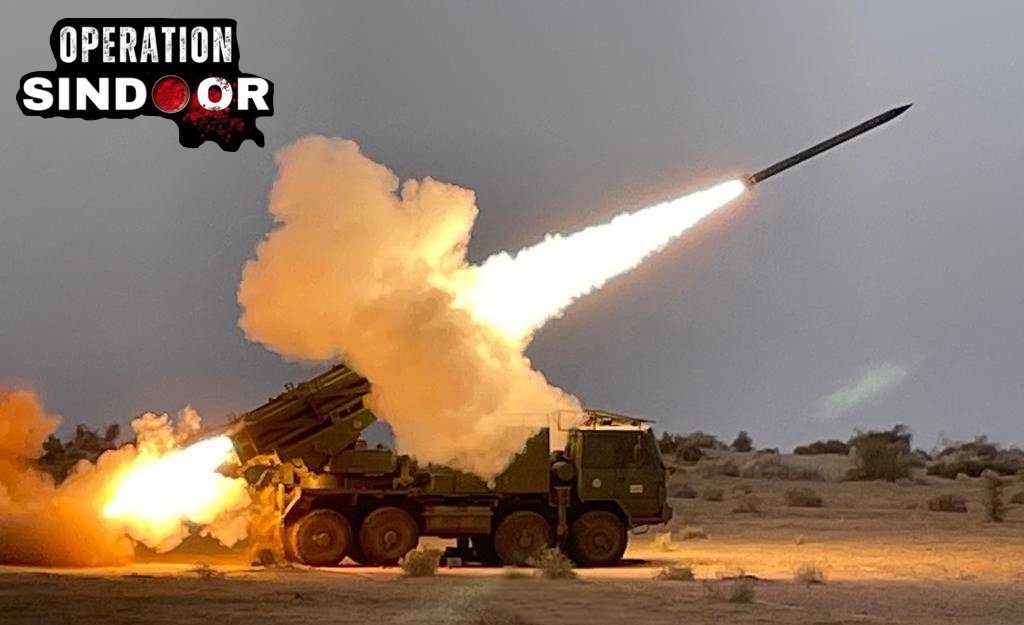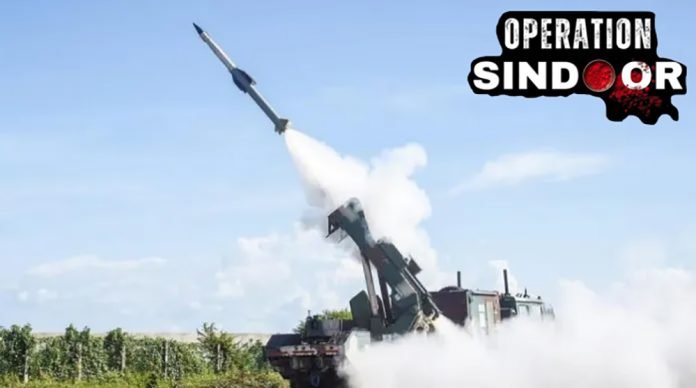India’s growing military success, especially evident in recent operations like Operation Sindoor, should serve as a sharp warning to nations. While India innovates quickly and builds cost-effective, scalable warfighting models, the US remains trapped in slow, outdated Cold War frameworks.
Meanwhile, Maggie Feldman-Piltch, Founder and Managing Director of Unicorn Strategies, has all the praise for India’s ‘Make in India’ initiative for defence production and its growing partnership with the United States. In an exclusive during the Munich Security Conference (MSC), she said, “The Make in India initiative makes sense and is in line with a great deal of the trends we see around the world, particularly in Europe.”
It is indeed imperative to boost India’s “Aatmanirbharta,” or self-reliance in the defence sector. India’s Pinaka rocket costs less than $56,000, compared to a US Guided Missile Launch Rocket System (GMLRS) missile priced at $148,000. India’s rapidly developed Akashteer missile defence system is at a fraction of the cost of US-made Patriot or NASAMS platforms. Even Ukraine’s use of Iran’s $20,000 Shahed-136 drone outpaces the US MQ-9 Reaper, which costs over $30 million.
These examples highlight a fundamental problem in the American defence ecosystem. “The United States is in urgent need of fundamental defence reform. Not just adjustments. Not just marginal gains. A full-scale overhaul,” as stated by John Spencer and Vincent Viola in the Small Wars Journal, What ails US defence industry.
India’s Pinaka rocket costs less than $56,000, compared to a US Guided Missile Launch Rocket System (GMLRS) missile priced at $148,000. India’s rapidly developed Akashteer missile defence system is at a fraction of the cost of US-made Patriot or NASAMS platforms
The US defence industry is dominated by a handful of giant contractors. Lockheed Martin, Boeing, Northrop Grumman, Raytheon Technologies, and General Dynamics which rank among the top global arms producers. According to the Stockholm International Peace Research Institute (SIPRI), nine of the world’s top 20 defence firms by revenue are American, and 41 of the top 100 are US-based.
What once was a sign of strength now feels more like a cartel and Spencer and Viola warn that “America’s defence manufacturing process is dominated by a small cartel of primes that, while capable, have little incentive to drive innovation, reduce cost, or adapt quickly. There is no real market competition. This is not competition—it’s cartelised domination.”
Despite soaring defence budgets—expected to near $1 trillion by 2025—the number of prime contractors has shrunk drastically. A Department of Defence study noted that prime defence contractors fell from 51 to fewer than 10. As President Donald Trump pointed to the problem bluntly: “Defence companies have all merged in, so it’s hard to negotiate… It’s already not competitive.”
Since the days following Operation Sindoor in which terrorist camps in Pakistan were destroyed, Indian defence firms – both private and public – have seen a combined capitalisation surge of over Rs 1.5 lakh crore, with stock gaining from 15 to 40 per cent. The scale of sophistication of Made-in-India weaponry used in Operation Sindoor were unprecedented.
Since the days following Operation Sindoor in which terrorist camps in Pakistan were destroyed, Indian defence firms – both private and public – have seen a combined capitalisation surge of over Rs 1.5 lakh crore, with stock gaining from 15 to 40 per cent. The scale of sophistication of Made-in-India weaponry used in Operation Sindoor were unprecedented
On the other hand, the US acquisition process is notoriously slow. It often takes years, sometimes decades, to field new equipment. While the US struggles to keep up, countries like India show how to innovate efficiently. India’s defence industry emphasises cost-effective, rapid development. The Akashteer system and Pinaka rockets are examples of scalable, rugged platforms built with speed and affordability in mind.
Spencer and Viola highlight the absence of “an agile, scalable, layered, fast-response production network” in the US. “There is no real surge capacity,” they note. This gap leaves America vulnerable in fast-paced modern conflicts.

Defence firms increasingly operate in isolation from broader markets. A 2024 study by the Centre for Strategic and International Studies (CSIS) found that 61% of major defence contracts go to companies with no commercial business. This figure rises to 86% when firms like Boeing, whose commercial work is limited, are included.
To avoid falling behind, the US must rebuild its defence acquisition process around speed, iteration, and frontline feedback—not decade-long static programmes. It needs to break up industrial monopolies or foster genuine competition and alternative suppliers. Equally important is treating allies like India and Israel as co-equal production partners, not merely buyers or technology recipients
This shift began after Cold War budget cuts in the 1990s, driving consolidation and pushing commercial players out. The result is a defence industry insulated from market pressures and reluctant to innovate. Spencer and Viola warn bluntly: “The time for US defence reform is not coming. It’s already late.”
To avoid falling behind, the US must rebuild its defence acquisition process around speed, iteration, and frontline feedback—not decade-long static programmes. It needs to break up industrial monopolies or foster genuine competition and alternative suppliers. Equally important is treating allies like India and Israel as co-equal production partners, not merely buyers or technology recipients.
A White House executive order last month recognised this. “Unfortunately, after years of misplaced priorities and poor management, our defence acquisition system does not provide the speed and flexibility our Armed Forces need to have decisive advantages in the future,” it said. The order directed the Secretary of Defence to deliver a reform plan within 60 days.
China poses the biggest challenge. It has the largest active military force globally, with approximately two million soldiers and a population more than four times that of the US. Winning future wars will not be about who has the biggest army. It will depend on who can innovate faster, produce economically, and fight at speed
But reform cannot stop at factories and procurement cycles. The US should establish permanent, deployable learning teams embedded in conflict zones and logistics hubs. These teams would gather battlefield lessons directly and feed them back into system design—making the US defence ecosystem “the most efficient, adaptable, and dominant in the world.”
China poses the biggest challenge. It has the largest active military force globally, with approximately two million soldiers and a population more than four times that of the US. Winning future wars will not be about who has the biggest army. It will depend on who can innovate faster, produce economically, and fight at speed. “Wars will be won by those who can think faster, build faster, and fight smarter—and above all, by those who master the physics of lethality required on the modern battlefield,” Spencer and Viola conclude.
For the US to lead again, it must not only revive its defence industrial power but also master lethality at scale, speed, and sustainability. The clock is ticking.
– The writer is a senior journalist and media consultant. The views expressed are of the writer and do not necessarily reflect the views of Raksha Anirveda.






